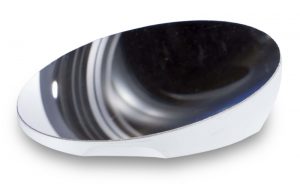How Vacuum Metallization Achieves its Highly Reflective Properties
Written by: Denton Vacuum, LLC
Summary: The process of vacuum metallization requires numerous steps.
 The process of vacuum metalizing involves the evaporation of metals – most commonly aluminum – inside a tightly sealed vacuum chamber. Upon completion, a uniform metalized layer is produced from the metal byproducts.
The process of vacuum metalizing involves the evaporation of metals – most commonly aluminum – inside a tightly sealed vacuum chamber. Upon completion, a uniform metalized layer is produced from the metal byproducts.
The Beginning Phases
Typically, you’ll see thermal evaporation as the primary PVD method utilized during vacuum metalizing – as opposed to ion beam sputter deposition. A vacuum environment is what applies these metal alloys and is a primary factor in the entire process. Now, vacuum metalizing has a variety of uses such as reflective coatings for light reflectors, heat shielding, vapor barriers, and decorative chrome. Most industries today utilize vacuum metalizing to produce products all around your household.
How Decorative Properties Are Obtained
The process begins by utilizing a custom tooling fixture to hold and mask the parts that are going to be used during the vacuum metalizing process. These tooling fixtures are responsible for providing maximum efficiency in the handling of the fixture itself, which allows for a high quality output. For most decorative applications that require reflective properties, it is vital that the user apply a formulated primer or a basecoat to ensure that the byproduct obtains the proper adhesion it needs for a smooth surface. Additionally, it’s required to assure a quality surface for the metallization steps. Proprietary coatings for numerous substrate, including plastics, need to be suited for both high and low temperatures. This means a quality sputter deposition system is required to obtain this.

